Waste is unwanted or undesirable material leftover or thrown after the completion of any process. In other words, it can also be stated that any substance or matter which the holder discards or intends to discard is waste or which is generally not used again. Waste management can be done through the 3R (Reduce, Reuse, Recycle) Principle also.
Some of the waste which is commonly seen are around are :
Municipal waste, Kitchen waste, Agriculture waste etc (These are Bio-degradable waste)
Construction waste, Polythene waste, Packaging waste, etc (These are Non-bio-degradable waste)
Bio-Medical waste and many others.
Yash Krishi dose has worked with the field of Biodegradable waste and two types of Non Biodegradable waste namely C& D waste and Polythene waste. In this regard a relevant article entitled “Getting Ready to Plan the Future Townships though Renewable Material and Technology” is attached. In this article waste like C&D, Fly Ash, Silica Fume, Blast Furnace slag, Red mud Etc.
Bio-Medical Waste:
It is one of the wastes which come from all Hospitals and Nursing homes. There are large varieties of medicines and their associated storage glassware or syringes’ which have to be destroyed. No 3R principle of waste management can apply for such waste.
- In present times we are struggling against one of the most devastating viruses ever struck in the world. For this – one of the major concerns is that it has started emerging all over the World.
- For this, the growing quantities of what is called ‘biomedical’ waste” are generated. There are mountains of used PPE kits, face mask, gloves, vaccine vials, syringes, needles, etc. are generated. This is all for the fight against Covid-19.
- In the period 2021 – till now ie February 22, when the “first, second wave, and now the third wave” is raging across the country, India witnessed a humungous 46 percent jump in the generation of Covid-19 biomedical waste.
Out of the various type of waste Yash Krishi……. has dealt with only two types of waste is Bio degradable waste & two non-Bio degradable wastes.
A. Processing of Bio-Degradable Waste:
“Composting” is the biological decomposition of lingo-cellulosic organic material like solid wastes, press-mud, etc – into a simple compound/humus-like end product called “compost”. The product is of value in agriculture both as an organic fertilizer and as a soil improver. It is used as an organic manure for moisture control and nutrient addition.
Management and Processing of Biodegradable Waste through shown though the following pictures
Following two steps are necessary for Processing of waste
Separation of Waste
Processing of Waste Methods
a. Bio-degradable Waste: Composting – physically
b.Composting through additive:
“Yash Activator Plus”- a microbial consortium has been developed by Yash Krishi – which is highly effective in composting press-mud, flowers and other biodegradable material collected from the ground, rivers/temples, and used in STPs, etc. The process of Bio-degradable waste converts into manure is given below.
B. Processing of some Non – Bio-degradable Waste:
There are large Varieties of Non-Bio-degradable waste available in all places like Roadside, Industry, Hospitals, polythene waste, Construction sites, etc. Techniques for two types of Nonbiodegradable waste have been developed to convert them to items like resources by YASTK: Following two wastes have been tried
Construction and Demolition Waste (MALWA or C&D waste)
Processing of Polythene begs waste
a.Processing of Construction and Demolition Waste (MALWA waste )
The process of treating this waste into useful materials like bricks, Interlocking Blocks, Perforated Blocks, etc has been developed. The process of these is given in the article and technology is also available on-demand to entrepreneurs.
b. Processing of Polythene Waste:
- A process has been developed in which such polythene beg / Polythene waste can be used for construction purposes of Roads / flexible Pavements and others. For flexible pavements, bitumen is the most common binder.
- In the present investigation, such bitumen has been modified with waste polythene beg pieces and Bituminous mix/concrete is made; which is used as the top layer or bearing coat of flexible pavement. Polythene begs mixed Bituminous mix showed better binding property, density, stability, and more resistance to water exposure.
Such Polythene waste can also be used for making Perforated Polymer Concrete blocks or slabs for rain water harvesting from Road sides, parking lots, etc as shown below. This is done by heating a small size of aggregate and heating it. On heated aggregate, the waste polythene pores as described in the article.


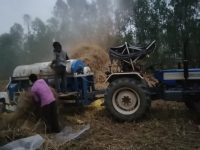


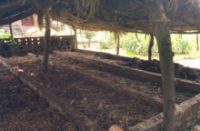

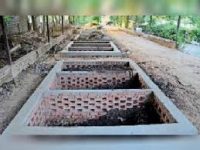




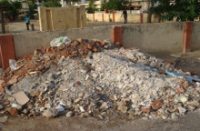
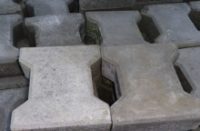


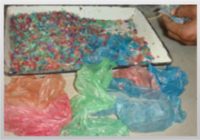

Waste Management